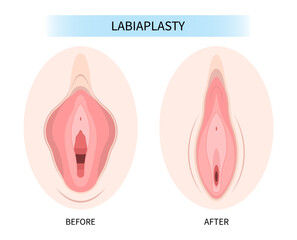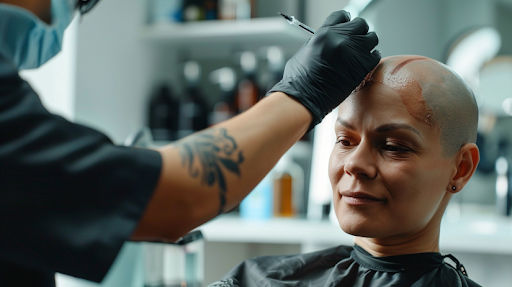
Overview
Choosing to undergo gender affirmation surgery is like embarking on a deeply personal and life-changing journey. It's for those who feel that their body doesn't reflect who they truly are on the inside – those identifying as transgender or non-binary.
Now, this isn't a decision to be taken lightly. It's very important to get in touch with an expert transgender surgeon who gets the ins and outs of transgender health.
Let's take a look at all the procedures.
MTF Transgender Genital Procedures
Several types of genital surgery may be performed on transgender individuals who are transitioning from male to female (MTF), also known as gender confirmation surgery.
Post-operative trans women have undergone gender-affirming surgery, which involves the creation of a neovagina. This surgical procedure is complex and requires significant healing time. After the surgery, the patient must follow a strict dilation regimen to maintain the depth and width of the neovagina.
These procedures are designed to alter the physical appearance and function of the genitalia to match the individual's gender identity.
Some common MTF genital surgery procedures include:

FTM Transgender Genital Surgery
Transitioning from female to male (FTM) involves genital surgery for transgender individuals, altering the physical appearance and function of their genitalia to match their gender identity.
- Phalloplasty: Construction of a penis using skin and tissue, potentially including a scrotum made from labial skin.
- Metoidioplasty: Lengthening and strengthening the clitoris, enlarged by hormone therapy, to create a small phallus.
- Hysterectomy and Oophorectomy: Removal of the uterus and ovaries, which may complement genital surgery as part of the overall transition.
Now you might be wondering: What should you expect after surgery? We'll answer this common question and provide practical tips for your recovery journey.
If you have already had a hysterectomy or are planning to get it done and are worried about the procedure, then read on this blog about the long-term effects of hysterectomy
What to Expect After Post-Op Transgender Genitals?

Post-op transgender genital patients may experience a range of physical and emotional changes, including improved body image and self-confidence, increased comfort with their gender identity, and improved sexual satisfaction.
The following are some of the things you can expect post-bottom surgery or post-op transgender genitals.
MTF Post Bottom Surgery
1. Vaginoplasty
Hospital stay: between 3 and 7 days
Recovery period: 4-6 weeks
Side effects: infection, bleeding, scarring, and pain
Post op Male to Female Bottom Surgery Guidelines:
- Avoid strenuous activities and heavy lifting for the first two weeks after surgery.
- Avoid sexual activity, including masturbation, for at least six weeks after surgery.
- After the first week, take short walks in the house or outdoors to help with blood circulation and reduce the risk of developing blood clots.
2. Labiaplasty
Hospital stay: 1 to 2 days
Recovery period: 7-14 days
Side effects: bruising, swelling, tenderness, and pain in the area
Post op Male to Female Bottom Surgery Guidelines:
- Avoid strenuous activities for at least two weeks after surgery.
- Avoid sexual activities for at least two weeks after surgery.
- Use an ice pack to reduce swelling and discomfort.
- Take medications as prescribed by your surgeon.
- Apply a clean, damp cloth to the area to help with healing.
- Keep the site clean and dry.
3. Clitoroplasty
Hospital stay: 1 to 3 days
Recovery period: 6-8 weeks
Side effects: swelling, pain, infection, scarring, nerve damage, and changes in sexual sensation or sensitivity
Post op Male to Female Bottom Surgery Guidelines:
- Avoid strenuous activity, heavy lifting, and contact sports for at least four weeks after surgery.
- Avoid sexual activity, including masturbation, for at least four weeks after surgery.
- Do not submerge the area in water for three weeks after surgery.
- Wear loose-fitting clothing to reduce friction and irritation.
- Clean the area with a gentle cleanser daily, followed by an antibiotic ointment.
Do you also want to ensure a smooth recovery and get a comprehensive post-op care guide? Book your consultation with experienced transgender surgeons to discuss essential tips and advice.
FTM Post Bottom Surgery
1. Phalloplasty
Hospital stay: 2 to 3 days
Recovery period: 1 to 3 months
Side effects:
- Pain, swelling, and bruising in the areas where incisions have been made
- infection
- adverse reactions to anesthesia
- blood clots, poor healing or scarring
- urethral fistula
- erection difficulties
- nerve damage
- shortening of the penis
- loss of sensation due to nerve damage
Post-Op Bottom Guidelines:
- Keep your incision sites clean
- avoid sexual activity
- follow a healthy diet, etc.
2. Metoidioplasty
Hospital stay: 1 to 2 days
Recovery period: 4-6 weeks
Side effects:
- Swelling of the clitoris and labia
- bleeding and bruising at the surgical site
- pain and discomfort in the genital area
- infection of the incision site
- damage to the surrounding tissue
- numbness in the genital area
- scarring,
- dyspareunia (painful intercourse),
- persistent or recurrent urinary tract infections,
- difficulty in achieving orgasm, etc.
Post-Op Guidelines:
- Avoid straining, such as lifting, for at least six weeks after surgery.
- Take antibiotics as prescribed to prevent infection.
- Ice your incisions to reduce swelling.
- Wear a jockstrap or a snug-fitting pair of briefs to support the area.
- Keep your incisions clean and dry.
3. Hysterectomy and oophorectomy
Hospital stay: 1 to 2 days
Recovery period: 4-6 weeks
Side effects:
- reduced libido,
- decreased fertility and hormone levels,
- and a decrease in the production of certain hormones
Post-Op Guidelines:
- Get plenty of rest and take it easy for at least 2 weeks after your surgery.
- Avoid strenuous activities and heavy lifting for at least 6 weeks.
- Refrain from sexual activity for 6 weeks.
If you are looking for the cost of all the above procedures then check out our comprehensive blog on the cost of gender reassignment surgery
"Life post-op transgender genitals surgery can be incredibly fulfilling. With proper care and support, patients can enjoy significant improvements in their quality of life and overall well-being." Says Dr. Vinod Vij, Plastic Surgeon from Mumbai.
Life Post-Op Transgender Genitals

MTF Bottom Surgery Post-Op Results
Procedure | Results and Improvements |
Vaginoplasty |
|
Labiaplasty |
|
Clitoroplasty |
|
FTM Post-Op Bottom Surgery Results:
Procedure | Results and Improvements |
Phalloplasty |
|
Metoidioplasty |
|
Hysterectomy and oophorectomy |
|
Are you wondering when you will see the results?
The timing of when bottom surgery results will be visible will depend on the type of surgery being performed.
- With a procedure like vaginoplasty (construction of a vagina), the individual will typically need to allow several weeks or months for swelling to go down and for the incisions to heal before they can see the final results.
- With a procedure like phalloplasty (construction of a neophallus), the individual may need to wait several months or more before seeing the final results, as the neophallus will need time to heal and for tissue expansion to occur.

Now, you indeed might have the next question “Are the results permanent?”
- Well, bottom surgery results for transgender individuals are generally considered to be permanent. However, as with any surgical procedure, there is a risk of complications, and touch-up or revision surgery may be necessary in some cases.
Take charge of your health with the best treatment. Book your consultation now.
Success Rate of Transgender Genital Surgery
- In studies assessing transgender men and women together, bottom surgery (genital surgery) accounts for 4% to 13%
Success Rate of MTF Transgender Genital Surgeries
Procedure | Success Rate |
Vaginoplasty | 80%-90% |
Labiaplasty | Around 87%-90% |
Clitoroplasty | Around 90% |
Success Rate of FTM Transgender Genital Surgeries
Procedure | Success Rate |
Phalloplasty | 75%-85% |
Metoidioplasty | 81%-90% |
Hysterectomy and oophorectomy | Around 95% |
The success rate of transgender genital surgery varies and can depend on several factors, including the individual's overall health, the surgeon's experience and skill level, and the specific techniques used during the procedure.
Amazed after seeing the success rates?
But as it is said, nothing is picture-perfect!
At times, there may be relapses too!
Relapse Post Op Transgender Genitals
Relapse after MTF Transgender Genital Surgeries
Procedure | Relapse |
Vaginoplasty |
|
Labiaplasty |
|
Clitoroplasty |
|
Relapse after FTM Transgender Genital Surgeries
Procedure | Relapse |
Phalloplasty |
|
Metoidioplasty |
|
Hysterectomy and oophorectomy |
|
But do not worry! You can prevent relapses by following the below tips!
Let's break it down: From hygiene to follow-up appointments, discover everything you need to know about managing long-term results post-op surgery.
Tips for long-term results of transgender genitalia surgery
- Follow your post-operative care instructions: It is essential to follow your surgeon's instructions for post-operative care, including any restrictions on activity, wound care, and medications.
- Take care of your incisions: Keep them clean and dry, and avoid soaking them in water until they are fully healed.
Avoid excessive strain on the incisions, such as heavy lifting or strenuous exercise, until your surgeon gives you the okay.
- Practice good hygiene: Proper hygiene is important to help prevent infection and maintain good overall health.
This may include washing the incision site with soap and water, keeping the area clean and dry, and avoiding sexual activity until your surgeon gives you the okay.
- Take your medications as prescribed: If you have been prescribed, it is important to take them exactly as directed. Be sure to finish your entire course of antibiotics to help prevent infection.
- Get plenty of rest: Rest is important to help your body heal after surgery. Avoid overexerting yourself and take breaks as needed.

- Eat a healthy diet: A healthy diet can help your body recover and heal quickly after surgery. Eat a well-balanced diet with plenty of fruits, vegetables, and protein.

- Stay hydrated: Drink plenty of water to help keep your body hydrated and support healing.

- Attend Follow-Up Appointments: Regular check-ups with your surgeon are crucial for monitoring healing.
Hope this article has answered everything you wanted to know regarding post-op transgender genitals.
Have more doubts? Schedule your consultation at the best transgender surgery hospitals to ensure you’re healing properly and address any concerns.
Impact of transgender genital surgery on long-term sexual health
The long-term sexual health impact of post-operative transgender genital surgery can be significant and varies based on the type of surgery and individual circumstances. Generally, these surgeries aim to align an individual's physical anatomy with their gender identity, which can have positive effects on psychological well-being and sexual health.
However, outcomes such as sensation, sexual function, and satisfaction can vary. It's essential for patients to have realistic expectations and to receive comprehensive counseling on these aspects both before and after surgery. Post-operative care, including physical therapy and follow-up medical consultations, plays a crucial role in ensuring the best possible outcomes in terms of sexual health and overall quality of life.
References:







